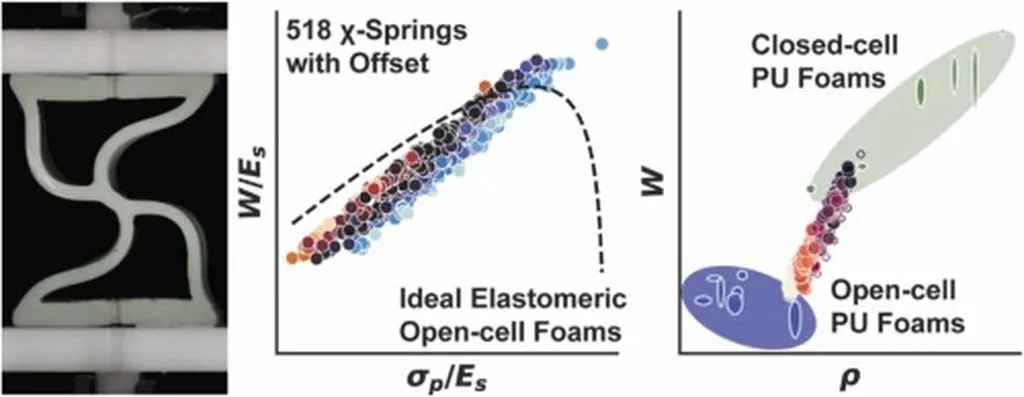In the ever-evolving landscape of lightweight engineering design, a groundbreaking study led by Serretiello Mathilde from the University of Toulouse and her team at IMT Albi, INSA Toulouse, ISAE-SUPAERO, and CNRS, ICA, is set to redefine the way we think about mechanical springs. Published in the esteemed journal ‘Mechanics & Industry’ (Mécanique & Industries in French), this research delves into the realm of additively manufactured beam-based lattice materials, offering a promising avenue for reduced material usage and enhanced performance in mechanical springs.
The study introduces a novel redesign of traditional helical springs by incorporating a multi-scale architecture, leveraging the unique properties of lattice materials. These materials, composed of repeating unit cells, are increasingly being used in modern engineering applications due to their lightweight and robust nature. Mathilde Serretiello and her team developed a parametric model of the helical spring made of lattice material, enabling rapid geometry and finite element preparation, as well as optimization based on a differential evolution algorithm.
One of the key aspects of this research is the judicious multiscale optimization of the lattice structure. By employing stress homogenization based on the lattice gradient, the team was able to significantly improve the spring stiffness. This optimization process is crucial for enhancing the performance of mechanical springs in various applications, particularly in the energy sector where efficiency and reliability are paramount.
The experimental validation of the proposed redesign was performed on additively manufactured spring prototypes, demonstrating the practical feasibility and effectiveness of the new design. “The integration of lattice materials into mechanical springs opens up new possibilities for lightweight and high-performance engineering solutions,” said Mathilde Serretiello. “Our research not only reduces material usage but also enhances the overall performance of the springs, making them more suitable for demanding applications in the energy sector.”
The implications of this research are far-reaching. In the energy sector, where mechanical springs are used in various applications such as energy storage systems, vibration dampers, and load-bearing structures, the adoption of lattice materials can lead to more efficient and reliable components. The reduced material usage also translates to cost savings and environmental benefits, aligning with the growing emphasis on sustainability in engineering practices.
As the field of additive manufacturing continues to advance, the integration of lattice materials into mechanical components is expected to become more prevalent. This research by Mathilde Serretiello and her team paves the way for future developments in this area, offering a blueprint for optimizing mechanical springs and other components using advanced materials and manufacturing techniques.
In the words of the researchers, “The potential of lattice materials in mechanical engineering is vast, and our study is just the beginning. We hope that our findings will inspire further innovation and exploration in this exciting field.” With the publication of this research in ‘Mechanics & Industry’, the engineering community is one step closer to unlocking the full potential of lattice materials in mechanical design.

